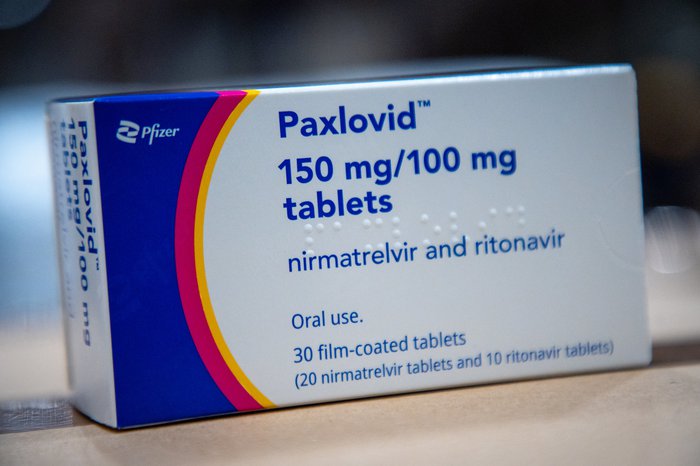Paxlovid rebound: what we know
Paxlovid is the most commonly prescribed treatment for people with severe immunosuppression who test positive for covid-19. We look at the phenomenon called Paxlovid rebound and what it might mean for the future of Paxlovid treatment.

What is Paxlovid?
Paxlovid is a treatment for adults who are at risk of becoming seriously ill if they catch covid-19. It combines two antiviral drugs, nirmatrelvir and ritonavir. It is a course of tablets taken over 5 days and should be started within 5 to 7 days of testing positive for covid-19.
What is Paxlovid rebound?
Paxlovid rebound describes a situation where people who are treated with Paxlovid recover and start testing negative, but then the covid-19 infection comes back – or rebounds – after a few days or weeks. Either the symptoms of covid come back, or people test positive for covid again, or both.
How common is Paxlovid rebound?
It’s important to know that people who haven’t had Paxlovid or any other covid treatment can also experience rebound, and that it is quite common.
An unpublished study from August this year looked at data from 568 people in the USA who tested positive for covid-19 and had no treatment with antivirals. Around 1 in 8 people (12%) experienced rebound. [Deo, August 2022]
It is thought that rebound rates are higher for people who take Paxlovid than for people who have no treatment, but more research is needed to confirm this.
Who can take Paxlovid?
People who have a severely weakened immune system (severe immunosuppression) may be eligible to take Paxlovid if they test positive for covid-19. This includes many people with blood cancer. Doctors will consider the type of blood cancer you have, other health issues and any medication you are already taking before deciding whether it’s safe for you to take Paxlovid.
Should I take Paxlovid?
News about Paxlovid rebound has understandably made some people worried about taking Paxlovid. Of course, it is your decision whether to take it if it’s offered to you. But it’s important to consider the potential benefits:
- There’s good evidence that Paxlovid significantly lowers your risk of getting seriously ill or dying from covid-19. This is still true if you experience rebound after taking it.
- You may not have any symptoms with Paxlovid rebound, and if you do get symptoms, they are likely to be mild. Very few cases of serious symptoms have been reported.
Why does Paxlovid rebound happen?
We don’t fully understand why Paxlovid rebound happens, but researchers are looking at possible causes, such as a resurgence of the virus, a secondary infection, or how the body’s immune system responds to the virus.
A recent US study involving a small number of people saw no evidence of uncontrolled replication of the virus in people who experience Paxlovid rebound. The researchers suggest that people who have a more robust immune response may in fact be more prone to rebound. [Epling, October 2022]
It is thought that rebound may be avoided in future by extending the course of tablets, but there is no evidence to support this yet. The manufacturer of Paxlovid, Pfizer, is conducting a trial to investigate this. The results are expected in September 2023.
What should I do if I have Paxlovid rebound?
Here’s what we recommend if you have taken Paxlovid to treat covid-19 and think you may have Paxlovid rebound:
- Tell your hospital team or GP – whoever takes the lead on your blood cancer care.
- Report what’s happened to the MHRA (Medicines & Healthcare products Regulatory Agency) via the Coronavirus Yellow Card scheme – this will help them monitor the extent of Paxlovid rebound amongst people who take it.
- Self-isolate for 5 days, as you may be infectious even if you have no symptoms.
We have information on how to get treatment for covid-19 if you have blood cancer.
Sources
Viral Kinetics of Severe Acute Respiratory Syndrome Coronavirus 2 (SARS-CoV-2) Omicron Infection in mRNA-Vaccinated Individuals Treated and Not Treated with Nirmatrelvir-Ritonavir, Eric Y. Dai et al, August 2022 [Preprint] https://doi.org/10.1101/2022.08.04.22278378
Viral and Symptom Rebound in Untreated COVID-19 Infection, Rinki Deo et al, August 2022 [Preprint] https://doi.org/10.1101/2022.08.01.22278278
Clinical, Virologic, and Immunologic Evaluation of Symptomatic Coronavirus Disease 2019 Rebound Following Nirmatrelvir/Ritonavir Treatment, Brian P Epling et al, Clinical Infectious Diseases, October 2022 https://doi.org/10.1093/cid/ciac663
Rebound Phenomenon after Nirmatrelvir/Ritonavir Treatment of Coronavirus Disease-2019 in High-Risk Persons, Nischal Ranganath et al, Clinical Infectious Diseases, June 2022 https://doi.org/10.1093/cid/ciac481
COVID rebound is surprisingly common — even without Paxlovid, news article in Nature, August 2022 https://doi.org/10.1038/d41586-022-02121-z
Sixty seconds on…covid rebound, news article in the BMJ, May 2022 https://doi.org/10.1136/bmj.o1365
